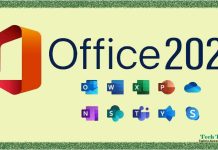Best Practices for Using a TMS System: High demand, intricate networks, and rapid pace increasingly characterize today’s business landscape. Transport management systems (TMS) are critical in navigating this complex environment. But optimizing the use of your TMS requires understanding the best practices that allow you to maximize its benefits. Keep reading to learn valuable insights and get the most out of your TMS investment with real-time visibility.
Optimizing Your TMS Configuration

The first step towards realizing the full potential of your TMS is effectively setting up the system according to your business needs. The functionality available in a TMS is vast and complex, but the reward for configuring it correctly can be immense in terms of time and cost savings.
Also Read: 3 Reasons to Use Application Security Testing Software for Your Business
As crucial as it is to configure the software well, the need to maintain and update it regularly is equally important. This ensures ongoing optimization in line with evolving business requirements and industry trends. Regular updates guarantee that the system stays compliant with changing regulations, protecting your business from potential legal repercussions.
The most progressive TMS offerings provide real-time visibility into your supply chain. Keeping informed in real-time requires that your TMS software be accurately configured, regularly maintained, and thoroughly tested to ensure data reliability and accuracy for effective decision-making.
Integrating TMS With Your Other Systems
Another best practice in TMS usage is its integration with other systems in your business. Proper integration ensures seamless data flow, eliminates redundant data entry, and promotes better decision-making.
One element that should be connected with your TMS system is enterprise resource planning (ERP). ERP is a software system that helps organizations manage and integrate various aspects of their operations, such as accounting, inventory management, customer relationship management, and human resources. By integrating ERP with TMS, businesses can achieve holistic supply chain visibility, enabling them to manage their resources effectively.
Order management systems, warehouse management systems, and customer relationship management systems are other examples that benefit from integration with the TMS setup. The goal should be to create an interconnected ecosystem of systems where information flows freely, adding to the overall efficiency and productivity of the business.
What is a SERP Checker? Explore a Powerful Tool that Benefits Your Business
Employee Training and Engagement
A TMS can offer myriad functionalities, but its potential cannot be fully realized without the appropriate awareness and skills among the users. Employee training is indispensable when it comes to TMS usage.
Investing in comprehensive training sessions can ensure your team is well-equipped to handle the system and address any issues promptly. But training is more than just a one-time activity—it must be recurrent to keep up with system updates and modifications.
Continuous engagement is key to motivating employees to leverage the system optimally. To encourage this, highlight successes and show your employees how the system is contributing to reaching the business objectives.
Measuring TMS Performance

Last but not least, benchmarking and measuring the performance of your TMS has a huge impact on its successful implementation. You can determine whether the system delivers as expected by tracking essential metrics like cost per mile, on-time deliveries, and others.
It’s important to take note of and address the pain points that emerge during the course of using the TMS. Are there regular glitches or errors in certain areas? If so, these should be identified, analyzed, and fixed promptly for better performance and user satisfaction.
Why Telecommuting Is the Future of Business Communication
Consistent measurement helps identify areas of improvement and reinforces the trust and confidence among users regarding the TMS software and its capabilities.
Using a TMS system to its fullest potential requires an intricate balance of technical acumen, employee engagement, and diligent tracking. These best practices would augment your business efficiency and productivity and support the effective management of your supply chain processes in the long run.


![2 Easy Ways to Block Unwanted Websites on Android Phone 2024 [Full Protection] Block Unwanted/Insecure Websites on Android Phone](https://www.techtalkies365.com/wp-content/uploads/2017/10/2-Easy-Ways-to-Block-Unwanted-Insecure-Websites-on-Android-Phone-2017-218x150.jpg)




![How to Download Windows 10 with IDM – ISO File [2024] How to Download Windows 10 with IDM](https://www.techtalkies365.com/wp-content/uploads/2017/10/How-to-Download-Windows-10-with-IDM-218x150.jpg)

![IDM Full Version 7.1 Pre Activated Download Link [100% Free] – Install Without Serial Key IDM Full Version 7.1 Pre Activated Download](https://www.techtalkies365.com/wp-content/uploads/2017/09/IDM-Full-Version-7.1-Pre-Activated-Download-218x150.jpg)




























